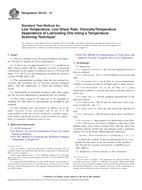1.1 This test method is designed to evaluate (quantitatively) the antimicrobial effectiveness of agents incorporated or bound into or onto mainly flat (two dimensional) hydrophobic or polymeric surfaces. The method focuses primarily on assessing antibacterial activity; however, other microorganisms such as yeast and fungal conidia may be tested using this method.
1.2 The vehicle for the inoculum is an agar slurry which reduces the surface tension of the saline inoculum carrier and allows formation of a “pseudo-biofilm,” providing more even contact of the inoculum with the test surface.
1.3 This method can confirm the presence of antimicrobial activity in plastics or hydrophobic surfaces and allows determination of quantitative differences in antimicrobial activity between untreated plastics or polymers and those with bound or incorporated low water-soluble antimicrobial agents. Comparisons between the numbers of survivors on preservative-treated and control hydrophobic surfaces may also be made.
1.4 The procedure also permits determination of “shelf-life” or long term stability of an antimicrobial treatment which may be achieved through testing both non-washed and washed samples over a time span.
1.5 Knowledge of microbiological techniques is required for these procedures.
1.6 This standard does not purport to address all of the safety concerns, if any, associated with its use. It is the responsibility of the user of this standard to establish appropriate safety and health practices and determine the applicability of regulatory limitations prior to use.
Product Details
- Published:
- 12/10/2001
- Number of Pages:
- 3
- File Size:
- 1 file , 32 KB


